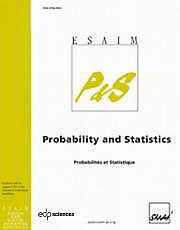Article contents
On identifiability of mixtures of independent distribution laws∗∗∗∗∗∗
Published online by Cambridge University Press: 01 July 2014
Abstract
We consider representations of a joint distribution law of a family of categorical random variables (i.e., a multivariate categorical variable) as a mixture of independent distribution laws (i.e. distribution laws according to which random variables are mutually independent). For infinite families of random variables, we describe a class of mixtures with identifiable mixing measure. This class is interesting from a practical point of view as well, as its structure clarifies principles of selecting a “good” finite family of random variables to be used in applied research. For finite families of random variables, the mixing measure is never identifiable; however, it always possesses a number of identifiable invariants, which provide substantial information regarding the distribution under consideration.
- Type
- Research Article
- Information
- Copyright
- © EDP Sciences, SMAI 2014
References
- 3
- Cited by




